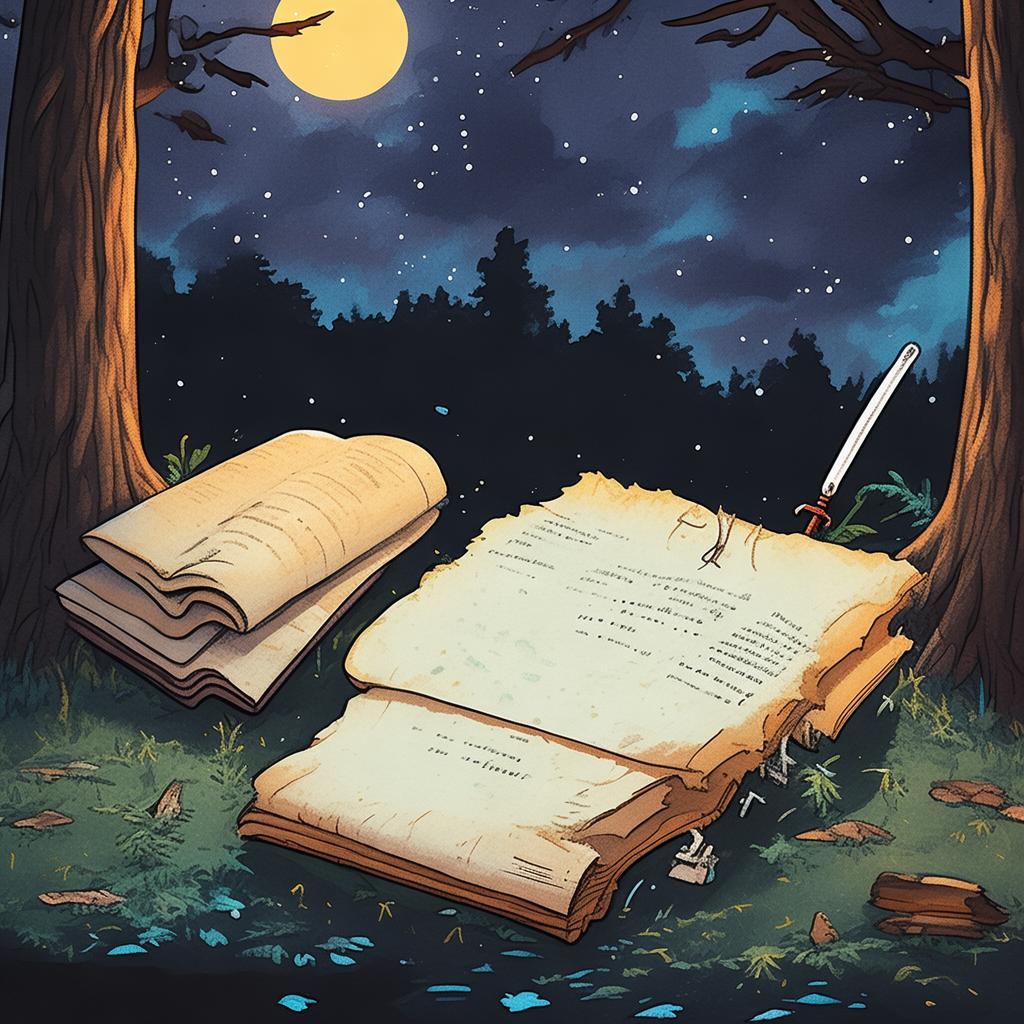Chronicles of the Mysterious Mirror: Osomatsu's Tangled Love
The quaint village of Tsukiyama was a place of serene beauty, where the gentle hum of cicadas and the rustle of leaves formed a harmonious backdrop to daily life. Yet, beneath this tranquil exterior lay a labyrinthine mystery, one that would forever change the lives of the Osomatsu brothers, Osamu, Shigeo, and Sadakazu.
One crisp autumn morning, as the sun cast its golden hue over the village, the brothers found themselves drawn to an old, dusty mirror in the attic of their ancestral home. It was an ordinary mirror, its frame carved with intricate patterns that seemed to tell a story of its own. Unbeknownst to them, this mirror was a portal to the Labyrinth of Love and Time.
Osamu, ever the pragmatist, peered into the mirror with a hint of skepticism. "This is just an old relic," he said, but the others were already enchanted. Shigeo, the dreamer, saw the possibility of a love story that could span across time, while Sadakazu, the jester, giggled and imagined himself as a suitor in an ancient court.

The mirror shimmered and a gust of wind swirled around them, and before they knew it, the brothers found themselves transported to a different time and place. The air was thick with the scent of exotic flowers, and the ground beneath their feet was a carpet of emerald grass.
They had arrived in the year 1590, during the Warring States period of Japan. The brothers, still in their traditional attire, were met with bewildered glances and whispers from the villagers. The mirror had not only brought them to a different time but also given them different identities; Osamu was now a humble farmer, Shigeo a courtier, and Sadakazu a jesting entertainer.
As they explored their new surroundings, they soon realized that their time was limited. The mirror was not just a portal to another time but a test of their resolve and love. Each brother was to pursue a love interest, and the one who succeeded would be granted a wish to alter their fate.
Osamu found himself in the fields, tending to his crops, where he encountered a beautiful woman named Kiku. Their love was instant, but their path was fraught with obstacles. Kiku was the daughter of a rival warlord, and the brothers knew that their love could only survive if they could bring peace to their warring factions.
Shigeo, dressed in the finery of a courtier, was drawn to the princess of a neighboring province. He was enchanted by her grace and beauty, but his quest for her heart was fraught with political intrigue and betrayal.
Sadakazu, with his playful nature, charmed a young woman named Haru at a festival. However, Haru's family was part of a secret society, and her heart belonged to the cause, not to the heart of a jesting entertainer.
The brothers found themselves facing the 4 most effective opening styles: suspenseful (the mysterious mirror), conflict-driven (the war between rival factions), shocking (the sudden change in their identities), and emotional (the deep love they found in their new roles).
As they pursued their respective loves, they discovered that the labyrinth was not just a test of their hearts but also a reflection of their innermost desires. Their actions and decisions would not only affect their own destinies but also those of the entire village.
In the midst of their adventures, they stumbled upon the mirror once more, its surface crackling with energy. They realized that the mirror was a sentient entity, a guardian of time and love, and that their fates were inextricably linked to its ancient power.
As the final days of their time in the past approached, the brothers faced a climactic moment that would test their courage, their love, and their unity. Osamu, Shigeo, and Sadakazu had to decide whether to succumb to the power of the mirror and alter their destinies or to accept their fates and return to their original lives.
In an unexpected twist, the mirror revealed that their love had already altered the course of history. The village of Tsukiyama, once a place of strife, was now a sanctuary of peace and harmony, thanks to the bonds of love they had forged.
With their hearts filled with joy and a newfound sense of purpose, the brothers returned to the present, their time in the past a testament to the power of love and the unbreakable bonds of brotherhood.
The ending of the story was a thematic one, leaving readers with the reflection that love can transcend time and alter destinies. It also left an open ending, inviting readers to imagine what the brothers' lives would be like now, years after their adventure in the Labyrinth of Love and Time.
✨ Original Statement ✨
All articles published on this website (including but not limited to text, images, videos, and other content) are original or authorized for reposting and are protected by relevant laws. Without the explicit written permission of this website, no individual or organization may copy, modify, repost, or use the content for commercial purposes.
If you need to quote or cooperate, please contact this site for authorization. We reserve the right to pursue legal responsibility for any unauthorized use.
Hereby declared.









